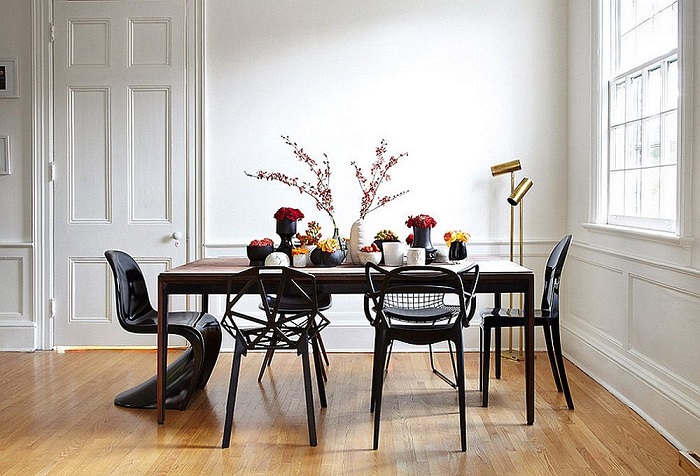Choosing the right table for your home is essential for creating a comfortable and functional living space. Modern interiors offer a wide variety of furniture options, with everyone able to find a perfect fit in terms of style, size, and material.
Table types vary based on their intended purpose—tables for the kitchen, living room, office, or bedroom. Each table has distinct characteristics, design, and construction, allowing you to choose the most suitable option for specific tasks and interiors.
More information about tables on https://jiji.cd/furniture will help you make the right choice and find the design and functionality that will perfectly fit your interior and meet all your needs. This approach ensures the durability and aesthetic appeal of the furniture for years to come.
Determining the Role of Functionality When Choosing a Home Table
Functionality influences the table’s suitability to the specific needs and lifestyle of its owners, and ensures a harmonious combination of aesthetics and practicality.
The Role of Functionality in Choosing Home Tables
Determining the main objectives is the first step when choosing a home table. It is important to understand its intended use: for work, dining, crafting, or as a multifunctional piece of furniture.
Size and design are also important aspects of functionality. A table should fit seamlessly into the interior while still leaving enough space for comfortable use.
Additional features, such as drawers, sliding elements, or built-in appliances, significantly enhance the practicality and convenience of everyday use.
Practical Recommendations for Considering Functionality
- Identify the priority tasks for which the table is needed.
- Choose a model based on the size of the room and the number of users.
- Pay attention to additional features that enhance convenience.
- Ensure easy access to frequently used items – this will enhance the functionality of the product.
Materials: Advantages and Disadvantages of Popular Options
Choosing the material for a table is an important step when purchasing furniture, determining its durability, aesthetics, and ease of use. Let’s look at the most common material options and their features.
The most popular materials are wood, MDF, laminated boards, and glass. Each has its own advantages and disadvantages, which will help you make the right choice based on your needs and interior style.
Wood
Advantages: Natural appearance, high durability, eco-friendliness, and the ability to be restored and processed. Wooden tables easily fit into interiors of various styles and last a long time with proper care.
Disadvantages: Significant cost, tendency to warp in humid conditions, and the need for periodic treatment with protective agents. Wood also requires careful handling to maintain its appearance.
MDF and Laminated Boards
Advantages: More affordable than natural wood, wide range of decorative finishes, good resistance to moisture and mechanical damage. Over time, MDF products are easy to install and repair.
Disadvantages: Less environmentally friendly than natural wood, limited service life under intensive use, possible deformation at high temperatures and humidity. Some types of laminated surfaces may peel or be damaged by hard objects.
Glass
Advantages: Aesthetic modern look, visually expands space, easy to maintain, high resistance to mechanical damage and moisture. A wide range of shapes and colors are available.
Disadvantages: High risk of damage from strong impacts, the need to use special shatterproof glass, and care when using to avoid injury. Glass surfaces can also leave fingerprints and require regular cleaning.
Optimal Size and Shape: How to Choose the Perfect Table for a Small Kitchen or Living Room
Choosing the right table size and shape is key to creating a comfortable and functional space in a small kitchen or living room. Given the limited space, it’s important to consider not only appearance but also practical aspects to maximize the available space.
The right choice helps avoid clutter and ensures comfort during everyday use. Below are recommendations to help you choose the perfect table for small spaces.
Recommended Table Sizes and Shapes for Small Spaces
- Rectangular Tables: Ideal for narrow spaces, the length should not exceed 120-150 cm to leave enough room for movement.
- Round and oval tables: visually expand the space and facilitate access from all sides. Round tables are typically no more than 110 cm in diameter to ensure comfortable movement.
- Compact, transformable options: extendable or folding models save space while still providing the ability to seat more people if needed.
Choosing a shape based on the room’s features
- Small kitchens with a narrow space: rectangular or folding tables are preferable.
- Living rooms or open-plan spaces: round or oval tables are suitable to create a sense of freedom and a friendly atmosphere.
- Multifunctional furniture: combined models that combine table and storage are an excellent solution for small spaces.
In summary, choosing the optimal table size and shape for small spaces is based on carefully considering the space’s features, functional needs, and aesthetic preferences. A well-chosen table will create a cozy and harmonious atmosphere, facilitating everyday activities and pleasant conversations.










